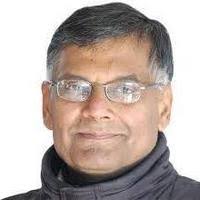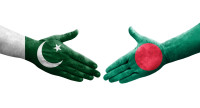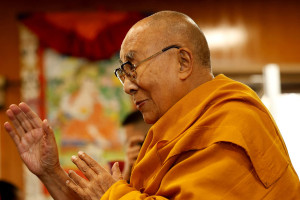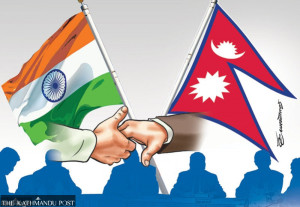Columns
A Himalayan haven for digital nomads?
AI is poised not only to change how people work but also to transform the very nature of tourism.
CK Lal
With the Himalayas glistening in the morning sun, almost every flight to or from Kathmandu in autumn feels like a mountain flight. The drive from Chandragadhi Airport in Bhadrapur is scenic until the Mai Khola Bridge, where heavy downpours and flash floods in October have caused extensive damage to the highway. In Ilam district, the loss of life and property from these unseasonal rains brought untold misery to local communities. The landscape remains scarred in several places, but people seem to have learned to cope with the devastation.
Unlike garish welcome gates in most parts of Nepal, Ilam greets its visitors with grace in a restrained manner. It is a quiet town along a ridge, a convenient vantage point from which to survey Nepal’s tourism follies. Its tea gardens—some more than a century old—roll across the hills like a green testament to the foresight of patrons, the patience of planners and the toil of labourers. The district also boasts the symbolic honour of greeting the sun before the rest of the country. On weekends, Kanyam swells with picnickers from the plains. While Shree Antu is pitched as a Himalayan sunrise spectacle, in practice, it doubles as a playground for the younger crowd eager to party at night before greeting the first rays.
From the district headquarters, the adventurous can tackle Sandakpur, and the contemplative can wander the well-marked paths around Maipokhari. A forest bath in the botanical garden around the wetlands—amid flowering creepers, leafy undergrowth, towering trees and the therapeutic sound of silence—can lift spirits, at least temporarily, for anyone jaded enough to need reminding that nature is still the surest solace.
Along the road from Fikkal Bazaar to Pashupati Nagar on the international border with India, quaint little cottages dot the landscape, and a Buddha statue waits to be inaugurated at the edge of a well-tended tea garden. Milk from nearby farms is transported on horseback to the Lucky Dairy, which processes it and sends its products to cheese connoisseurs in Pokhara and Kathmandu. The success story of its owner, originally from Rasuwa, is inspiring: He came in search of work, learned the craft of cheese-making at a smaller enterprise, and eventually became an entrepreneur of repute, known for the quality of his products. Ilam—pronounced with a silent ‘a’ in Nepali—also means skill and enterprise. The many signboards proclaiming Thakali Bhanchhaghar are a testimony to the ‘Ilam’ of Ilam in adapting national and international favourites and making them their own.
Segmented marketing
Most tourists in Ilam seem to be domestic travellers—some returning from the fertile plains to explore their ancestral home, others simply discovering their own country, and busloads of students on what is called an ‘educational tour.’ This reality challenges a common national delusion that ‘tourists’ must be foreigners. In fact, Ilam’s tourism economy depends overwhelmingly on domestic visitors. Even nationally, a report last year noted that 71.5 percent of total tourism spending came from Nepalis themselves. And yet, the domestic patrons are often ignored. The public sector takes them for granted. The private operators chase foreign currency. And tourism is equated with the glamour of foreign passports. The irony is exquisite: The very people who keep the industry afloat are treated as a backdrop to the parade of international arrivals that attract all the attention and accolades.
It is true that well-treated foreign visitors return home carrying more than souvenirs—they take back memories and stories. In doing so, they become unpaid ambassadors of the destination country, helping to shape its image through powerful word-of-mouth that colourful brochures and short videos rarely match. This phenomenon is well-documented: Tourism is now recognised as a strategic soft-power tool, capable of boosting a nation’s reputation, economic attractiveness and global appeal.
Satisfied travellers, in effect, become conduits of soft power. The old models of tourism promotion may be overdue for a rethink. As studies of e-WOM (electronic word-of-mouth) increasingly show, the tourism sector must also reckon with tech-savvy local clientele and the growing influence of digital nomads, who both contribute to and reshape the narratives that define a destination’s appeal.
For the new generation of visitors, factors such as security, connectivity, reliable facilities and a measure of serenity matter far more than thrill-seeking, discovery or the ritualised encounters with ‘exotic’ cultures that once defined Nepal as a tourist playground. Digital nomads who can work from anywhere require a very different set of facilities and services than mountaineers, explorers, trekkers, pilgrims or vacationers.
What this new crop of long-staying visitors cannot do without is stable, uninterrupted electricity; fast and dependable internet; neat and clean co-working and co-living spaces; and accommodation designed for hardworking professionals who also like to socialise, sing or dance from time to time. Pedestrian-friendly cobbled streets and cafés offering both exotic dishes and familiar comfort foods for different nationalities are desirable additions.
Attitudinal reorientation
Nepal has long relied on the Himalaya to do the heavy lifting—geographically, emotionally and economically. The mountain peaks stand proud, beckoning climbers who take on the challenge ‘because it is there,’ as George Mallory, an English mountaineer, famously said. Trekking, a kind of mountaineering-lite, offers a taste of that thrill without demanding the same level of training. The hidden valleys of the mid-mountains charm visitors with their warmth and easy smiles.
This formula has worked ever since Edmund Hillary and Tenzing Norgay Sherpa first stood on the summit of Everest in 1953. But the mystique has begun to fade as climbers now make seasonal beelines for one peak after another. Many established trekking routes have grown so crowded that the only ‘locals’ visitors encounter today are tourism entrepreneurs—and sometimes not even from the region.
Kathmandu Valley, with its seven UNESCO sites and well-practised jumble of devotion and disorder, has become the cultural equivalent of instant noodles: Comforting, reliable and endlessly photographed. Mustang was Shangri-La, Lumbini, the land of Nirvana. Together with Kathmandu, Pokhara and Lumbini, the Chitwan jungle safari formed the so-called ‘golden quadrant’ that once allowed visitors to boast they had ‘done Nepal.’
Recovery after the Gorkha Earthquake, and the post-pandemic rebound—reaching over 1.1 million international arrivals in 2024—suggest that the world’s fascination with spiritual challenge and physical exertion remains undiminished. The immediate impact of the Fall Protests in 2025 was humbling, with a spate of cancellations during the peak season. The long-term consequences of incidents affecting iconic hotel brands such as Hyatt and Hilton remain to be seen.
Investments in spiritual and wellness tourism—such as serene yoga retreats and meditation centres on forested slopes—have increased in recent years. The MICE (meetings, incentives, conventions, exhibitions) sector has yet to realise its full potential, and infrastructure for medical tourism remains conspicuously absent. For the most part, tourism entrepreneurs appear content continuing the practices established in the 1950s.
Artificial intelligence is poised not only to change how people work but also to transform the very nature of tourism. If Nepal can align its natural charm with modern infrastructure and sensible policy, it could reinvent itself—not merely as a destination for visitors and trekkers, but as a slow-living base camp that nurtures creativity for the world’s remote workforce.




 19.12°C Kathmandu
19.12°C Kathmandu















